The Ficus radicans Variegata features heart-shaped leaves with a striking variegation pattern of creamy white and green.
The creamy white patches are scattered throughout the leaves, creating a beautiful contrast against the vibrant green background. The variegation adds an eye-catching element to any indoor or outdoor space, making it a popular choice among plant enthusiasts.
No products found.
Botanical Description and Origin of Ficus radicans Variegata

Let’s start by examining the botanical description and origin of the Ficus radicans Variegata, a fascinating plant with unique variegated foliage. This variety of Ficus radicans, also known as the Variegated Rooting Fig, belongs to the Moraceae family.
It is a tropical evergreen vine that can be grown as a hanging plant or trained to climb walls and trellises.
Originating from Southeast Asia, specifically in the regions of India, Myanmar, and Malaysia, the Ficus radicans Variegata thrives in warm and humid climates.
It is well-adapted to tropical environments and can tolerate a variety of growing conditions. However, it is essential to provide it with the right care to ensure healthy growth and maintain the desired variegation.
Where to Buy Ficus radicans Variegata
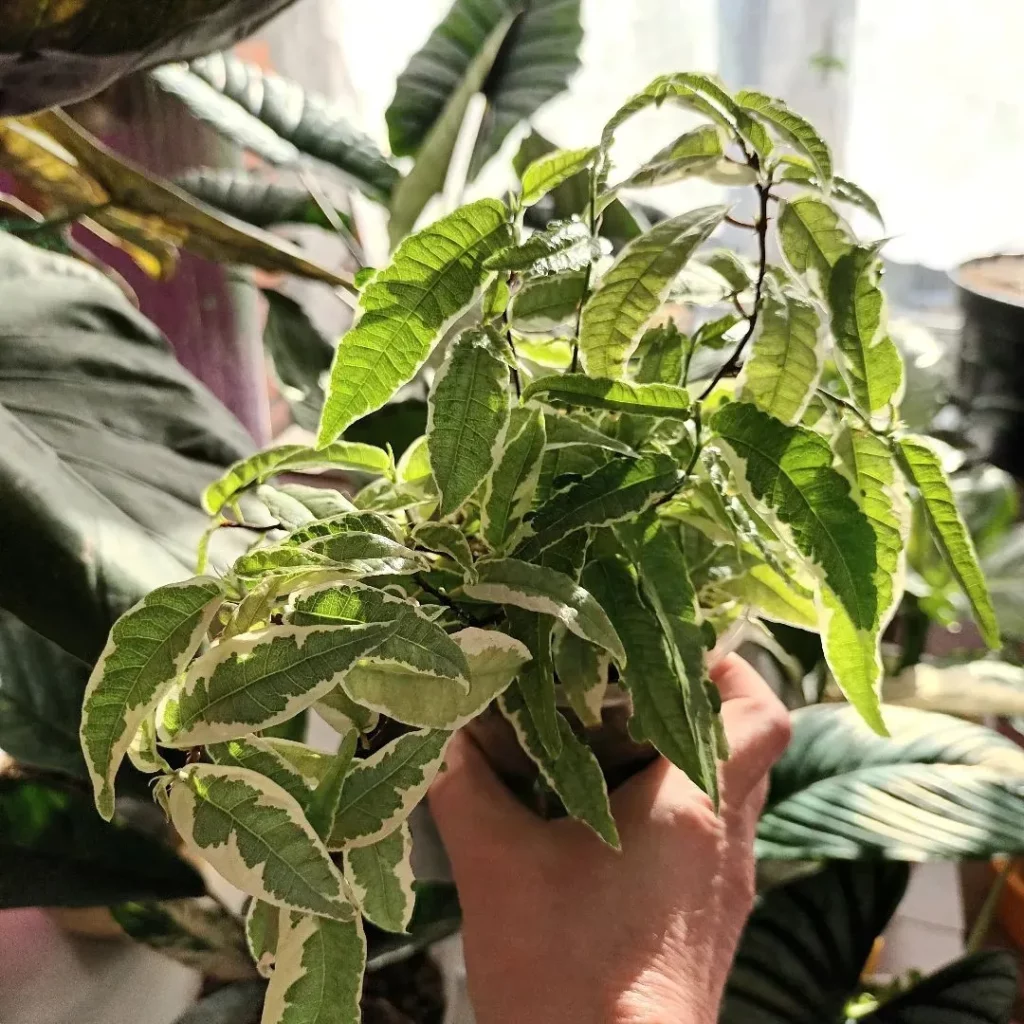
If you’re interested in adding a Ficus radicans Variegata to your plant collection, I’ve got you covered with tips on where to buy this beautiful plant. Finding reputable sellers is essential to ensure you receive a healthy and high-quality Ficus radicans Variegata.
Here are some options to consider:
- Local Plant Nurseries: Visit your local plant nurseries and garden centers. They often carry a variety of ficus plants, including the Variegated Rooting Fig. Talk to the staff, inquire about their sourcing practices, and examine the plants for any signs of pests or diseases.
- Online Plant Retailers: In today’s digital age, many online plant retailers offer a wide selection of ficus plants, including Ficus radicans Variegata. When purchasing online, it’s crucial to choose reputable sellers with positive reviews. Take note of their shipping policies, as live plants require careful packaging and expedited shipping to maintain their health during transit.
- Plant Expos and Farmers Markets: Check your local plant expos and farmers markets, as they often feature plant vendors. These events can be a great opportunity to find unique and hard-to-find plant varieties, including Ficus radicans Variegata. Talk to the sellers, ask questions about their plants, and select healthy specimens that catch your eye.
Pros and Cons of Different Buying Options
| Buying Option | Pros | Cons |
|---|---|---|
| Local Plant Nurseries | Opportunity to inspect plants in person, knowledgeable staff, immediate availability | Limited selection, may not carry Ficus radicans Variegata specifically |
| Online Plant Retailers | Wide selection, convenience of shopping from home, potential for rare varieties | Risk of shipping damage, inability to inspect plants before purchasing |
| Plant Expos and Farmers Markets | Possibility of finding unique and rare plants, direct interaction with sellers | Limited availability, seasonal events, potential for impulse purchases |
How to Grow Ficus radicans Variegata
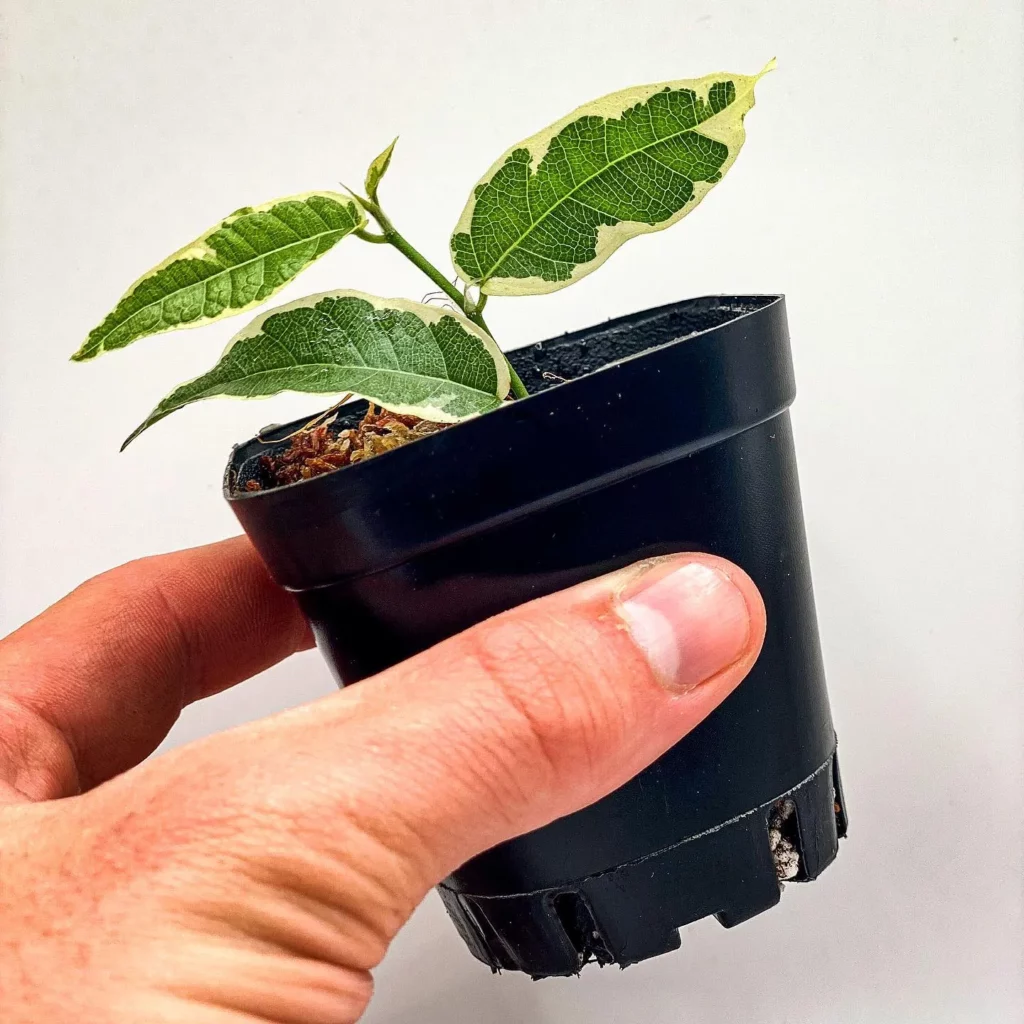
Growing Ficus radicans Variegata might seem intimidating, but with the right guidance, you can easily cultivate this stunning plant in your own home. This section will provide you with step-by-step instructions and valuable tips to ensure successful growth and care for your Ficus radicans Variegata.
Choosing the Right Location
When selecting a location for your Ficus radicans Variegata, aim for bright, indirect sunlight. This plant thrives in well-lit spaces but can be sensitive to direct sunlight, which may cause leaf burn.
Place it near a north-facing window or provide light filtering through curtains or blinds.
Watering Techniques
The watering needs of Ficus radicans Variegata are essential to its overall health. It is crucial to strike a balance between underwatering and overwatering.
Allow the top inch of soil to dry out before watering, and then thoroughly soak the soil until water drains out from the bottom. Remember to avoid leaving the plant sitting in standing water, as it can lead to root rot.
Fertilizing Schedule
To promote healthy growth, fertilize your Ficus radicans Variegata during the growing season, typically spring to summer. Use a balanced, water-soluble fertilizer diluted to half strength every four to six weeks.
Be cautious of overfertilization, as it can cause leaf tip burn. Always follow the instructions on the fertilizer packaging for best results.
| Light Requirements | Soil Requirements | Temperature and Humidity |
|---|---|---|
| Ficus radicans Variegata thrives in bright, indirect sunlight. Avoid direct sunlight to prevent leaf burn. | Use a well-draining, commercially available potting mix enriched with organic matter. A mix of peat moss, perlite, and vermiculite works well. | Ficus radicans Variegata prefers average room temperatures between 60-75°F (15-24°C). Maintain moderate humidity levels between 40-60%. |
Propagation Tips for Ficus radicans Variegata
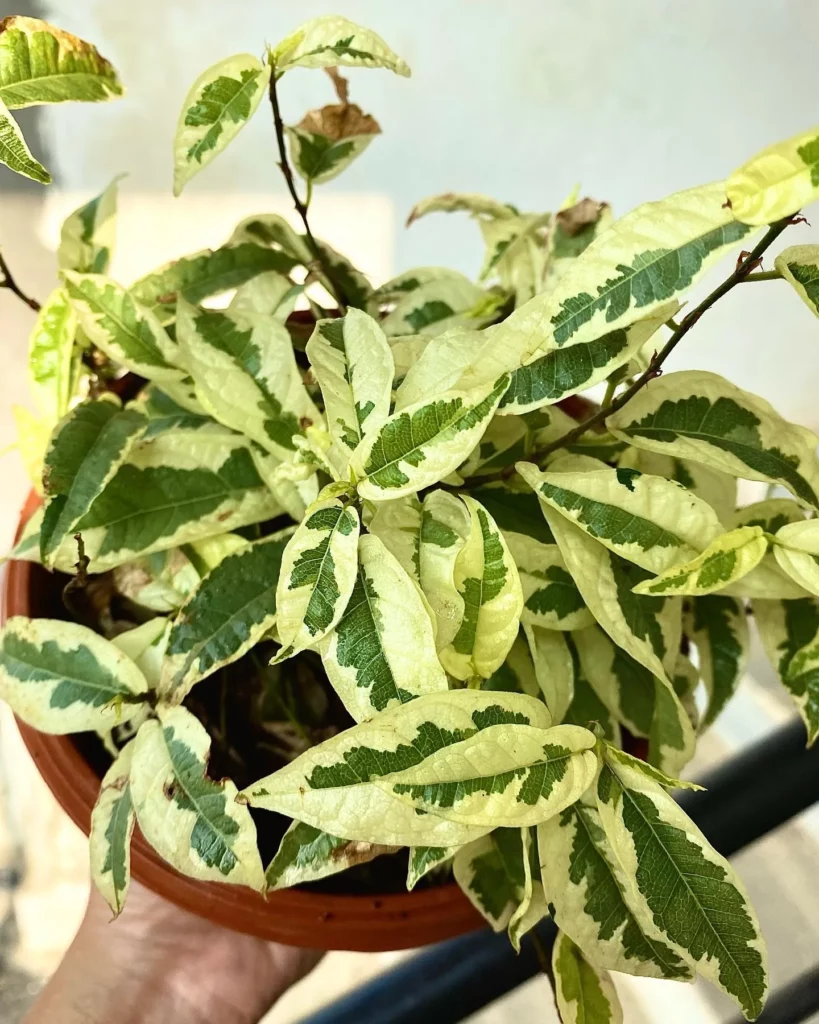
If you’re interested in expanding your Ficus radicans Variegata collection or sharing this plant with friends and family, learning how to propagate is essential. Propagating Ficus radicans Variegata can be a rewarding and cost-effective way to create new plants.
No products found.
One popular method of propagation for Ficus radicans Variegata is through stem cuttings. To propagate using stem cuttings, follow these steps:
- Select a healthy stem with several leaves.
- Using a clean, sharp knife or pruning shears, make a clean cut just below a node.
- Remove the lower leaves, leaving only a few at the top.
- Dip the cut end into a rooting hormone to promote root growth.
- Plant the cutting in a well-draining potting mix and water lightly.
- Place the cutting in a warm and humid environment, like a greenhouse or a covered container with a plastic bag over it.
- Keep the soil moist but not waterlogged, and provide indirect light.
- After a few weeks, roots should start to form. You can gently tug on the cutting to check for resistance, indicating that roots have developed.
- Once the cutting has established roots, you can transplant it into a larger pot or into the ground and continue caring for it as you would with an adult plant.
| Propagation Method | Description |
|---|---|
| Stem cuttings | This method involves taking a stem cutting, treating it with rooting hormone, and planting it in a suitable growing medium. |
| Air layering | Air layering is a technique that encourages roots to form on a portion of the stem while still attached to the parent plant, allowing for easy separation once roots have developed. |
| Division | Dividing the root ball of an established plant into smaller sections and repotting them individually can yield multiple new plants. |
| Leaf cuttings | In this method, individual leaves are taken from the plant and rooted to produce new plants. |
Quick Care Overview for Ficus radicans Variegata

In this quick care overview, you’ll find a summary of the essential care instructions to keep your Ficus radicans Variegata thriving. This beautiful plant requires proper light, soil, and watering to ensure lush growth and vibrant variegated foliage.
| Care Instructions | Frequency |
|---|---|
| Watering | When top inch of soil is dry |
| Fertilizing | Every 2-4 weeks during growing season |
| Pruning | As needed to maintain shape |
| Repotting | Every 2-3 years or when rootbound |
Light Requirements for Ficus radicans Variegata
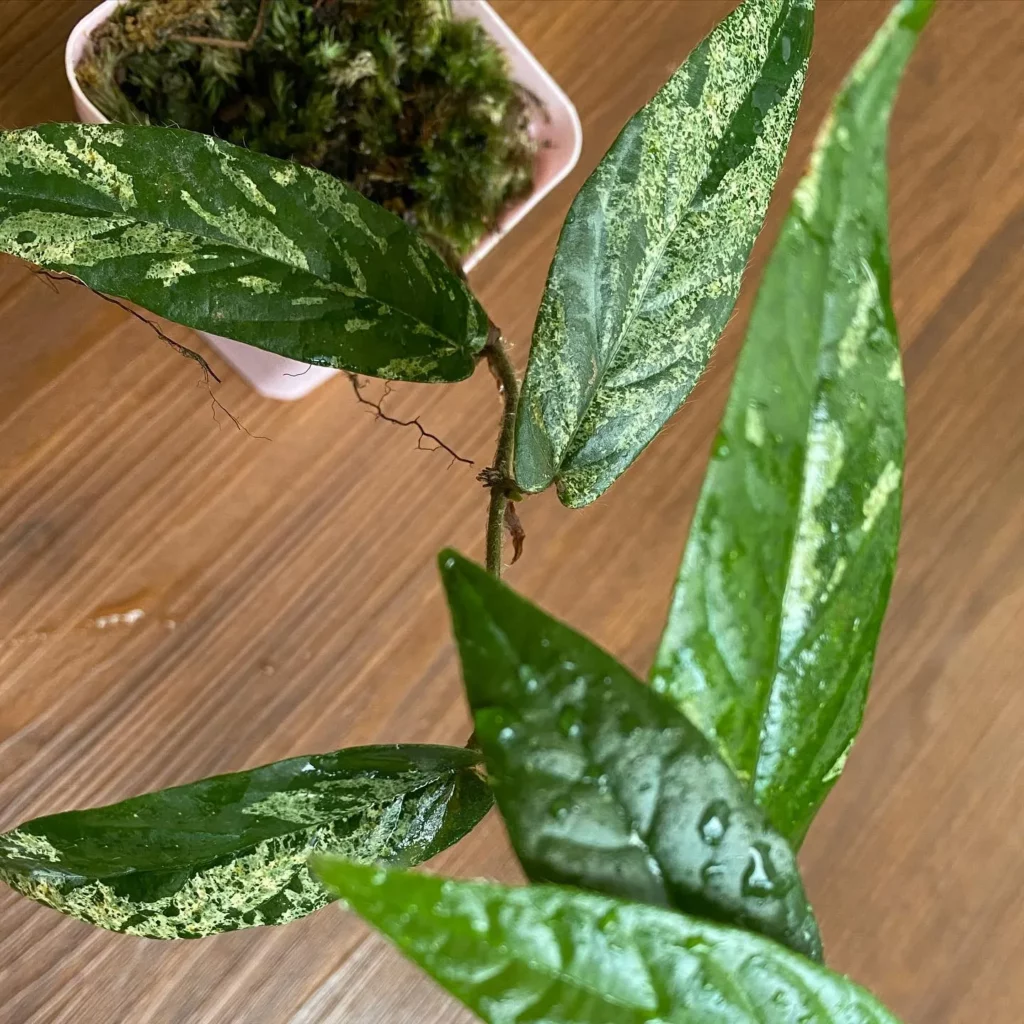
Providing the right amount of light is vital for the healthy growth of your Ficus radicans Variegata. Let’s delve into the specific light requirements for this unique plant.
The Ficus radicans Variegata thrives in bright, indirect light. It prefers a location with ample natural light, but without direct exposure to harsh, intense sunlight.
No products found.
Placing your plant near a north or east-facing window would be ideal, as it will receive bright, filtered light throughout the day.
If you have limited natural light in your home, you can supplement it with artificial lighting. You can use fluorescent lights or LED grow lights specifically designed for plants.
Position the lights about 12 to 18 inches above the plant and keep them on for 10 to 12 hours a day. This will ensure your Ficus radicans Variegata gets the light it needs to thrive.
It’s important to note that too much direct sunlight can scorch the leaves of your Ficus radicans Variegata, causing them to turn yellow or brown.
On the other hand, insufficient light can result in leggy growth and a loss of variegation. Finding the right balance is crucial for maintaining the health and appearance of your plant.
| Lighting Conditions | Effect on Ficus radicans Variegata |
|---|---|
| Bright, indirect light | Healthy growth with vibrant variegation |
| Direct intense sunlight | Scorched leaves, yellowing or browning |
| Insufficient light | Leggy growth and loss of variegation |
Soil Requirements for Ficus radicans Variegata
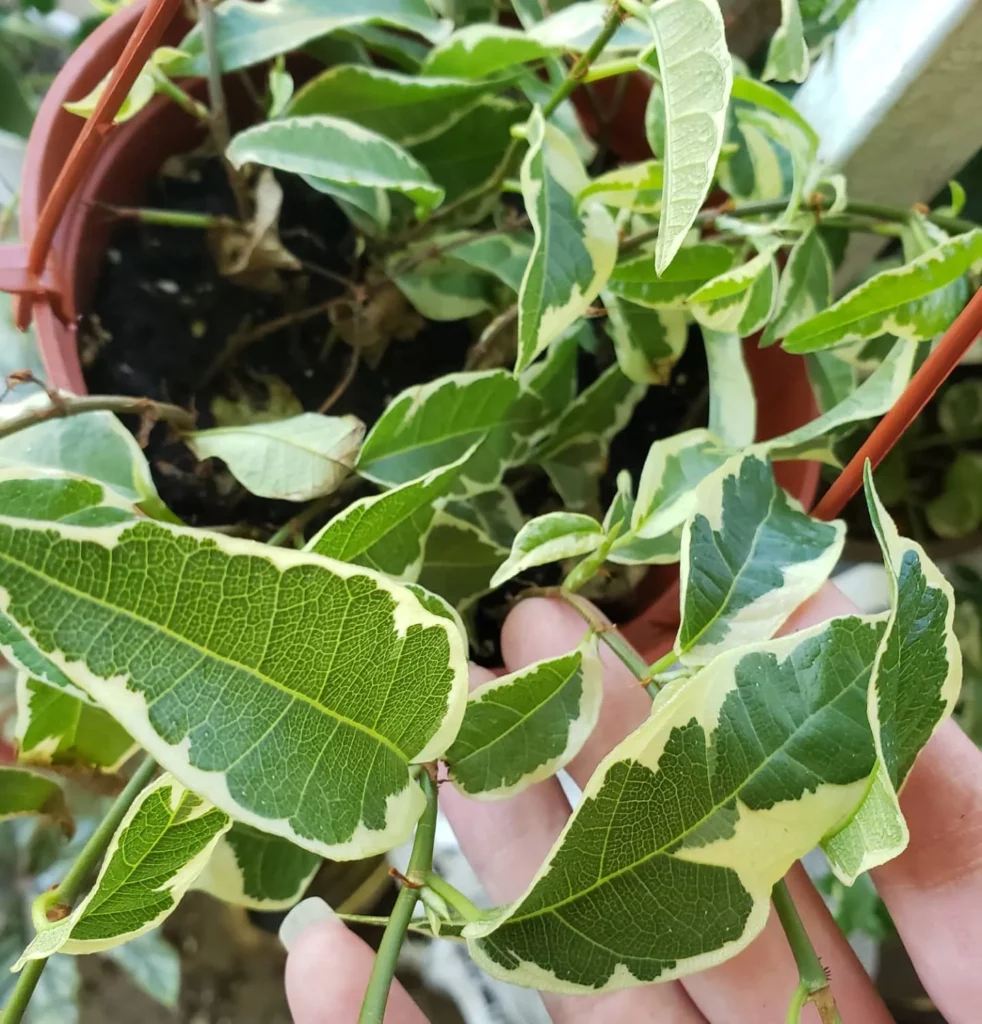
Creating a suitable soil environment is essential for the proper growth and development of your Ficus radicans Variegata. Let’s explore the specific soil requirements for this plant.
Ficus radicans Variegata thrives in well-draining soil that retains some moisture while allowing excess water to escape. A combination of peat moss, perlite, and potting soil works well as a base mix.
This blend provides adequate drainage and aeration while retaining the necessary moisture for the plant’s overall health.
It’s important to note that Ficus radicans Variegata is sensitive to overwatering. Therefore, adding a layer of gravel at the bottom of the pot can help prevent waterlogging. This layer acts as a drainage barrier, allowing excess water to flow away from the root zone.
In addition to the proper soil mixture, it’s beneficial to use a slow-release fertilizer specially formulated for houseplants. This helps provide a steady supply of essential nutrients to the roots without the risk of fertilizer burn.
Follow the fertilizer manufacturer’s instructions to determine the appropriate amount and frequency of application for your Ficus radicans Variegata.
Nutrient Requirements
| Nutrient | Role | Source |
|---|---|---|
| Nitrogen (N) | Stimulates leaf and stem growth | Nitrogen-rich fertilizers or organic compost |
| Phosphorus (P) | Promotes root development and flower production | Phosphorus-rich fertilizers or bone meal |
| Potassium (K) | Aids in overall plant health and disease resistance | Potassium-rich fertilizers or wood ash |
Potting and Repotting Ficus radicans Variegata
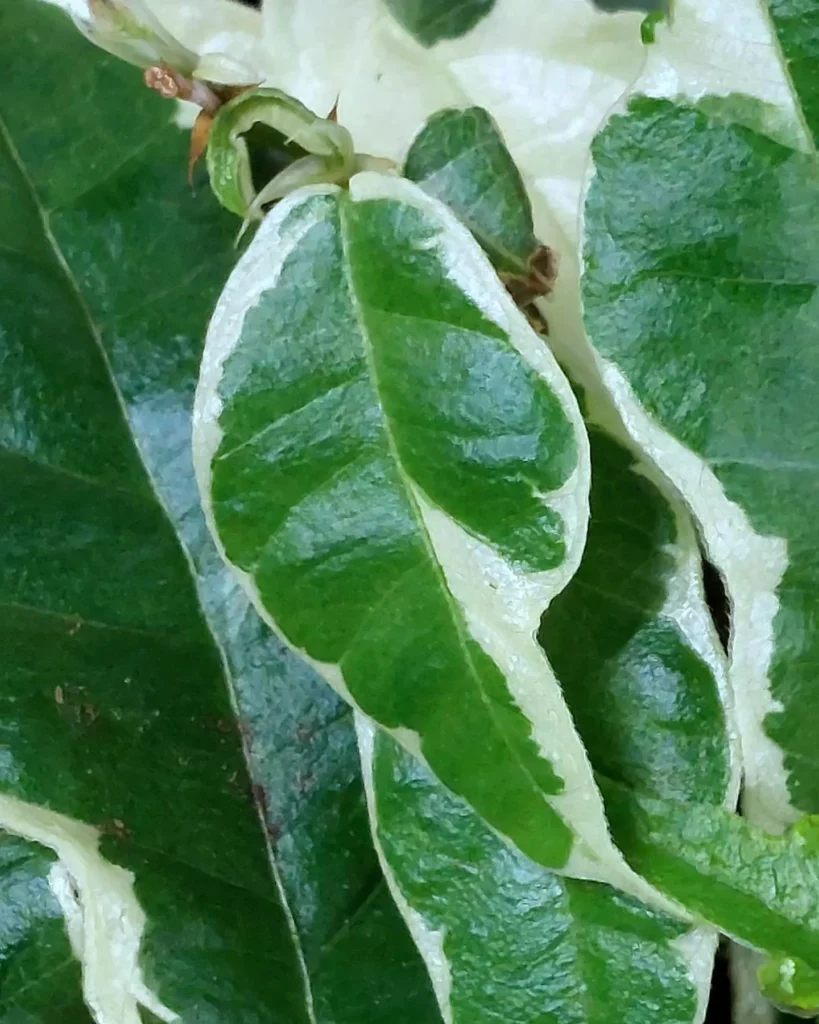
Potting and repotting your Ficus radicans Variegata correctly is crucial for its overall well-being. Let’s dive into the proper techniques and tips for potting and repotting this beautiful plant.
Potting: When potting your Ficus radicans Variegata, it is important to choose a container that has drainage holes to prevent waterlogging. Start by filling the pot with well-draining soil, such as a mixture of peat moss, perlite, and sand.
Gently remove the plant from its current pot, taking care not to damage the roots. Place the plant in the new pot, ensuring it sits at the same level as before. Fill any gaps with additional soil, firming it gently around the plant. Water thoroughly after potting to help settle the soil.
Repotting: As your Ficus radicans Variegata grows, it may outgrow its current pot and require repotting. Repotting is typically done every 2-3 years or when the plant becomes root-bound.
Choose a pot that is one size larger than the current one, allowing room for the roots to spread. Follow the same potting procedure mentioned above, ensuring the plant is at the same level as before. Trim any damaged or excessively long roots during repotting to promote healthy growth.
Pruning and Shaping Ficus radicans Variegata

Pruning and shaping your Ficus radicans Variegata will not only enhance its aesthetic appeal but also contribute to its overall health and vitality. By following proper pruning techniques, you can help your plant maintain a desirable shape, control its size, and promote strong and vigorous growth.
When it comes to pruning your Ficus radicans Variegata, it’s important to keep a few key points in mind. Firstly, always use clean and sharp pruning tools to make clean cuts, as this minimizes the risk of infection and damage to the plant.
Trimming dead, damaged, or diseased branches should be your first priority, as these can attract pests and affect the overall health of your Ficus radicans Variegata.
Additionally, pruning can be done to shape your Ficus radicans Variegata and promote denser foliage. You can remove leggy or sprawling branches to create a more compact and bushy appearance. Trimming back longer branches can also help maintain a balanced and symmetrical shape.
Temperature and Humidity Requirements for Ficus radicans Variegata
Proper temperature and humidity are key factors for the successful cultivation of your Ficus radicans Variegata. Let’s explore the specific requirements for this plant.
Ficus radicans Variegata thrives in average to warm temperatures, ideally ranging between 60°F (15°C) and 75°F (24°C). Avoid exposing your plant to extreme temperatures, as this may cause stress and hinder growth. It is important to provide a consistent temperature throughout the year to ensure optimal development.
In terms of humidity, Ficus radicans Variegata prefers moderate to high levels. Aim for a relative humidity of around 50% to 70%. To increase humidity, you can use a humidifier or place the plant on a pebble tray with water.
Misting the leaves regularly can also help maintain adequate moisture levels. However, be cautious not to mist excessively, as this may lead to fungal issues.
Watering, Fertilizing, and Pest Control for Ficus radicans Variegata
Regular watering, proper fertilization, and effective pest control are essential components of caring for your Ficus radicans Variegata. Let’s delve into these crucial aspects of plant maintenance.
Watering: The Ficus radicans Variegata prefers consistently moist soil, but be careful not to overwater as it can lead to root rot. The frequency of watering will depend on various factors such as the size of the pot, environmental conditions, and the season.
As a general rule, water your plant when the top inch of the soil feels dry. Ensure thorough watering by allowing water to flow freely through the drainage holes. Consider using a saucer to catch excess water and empty it after a few minutes to prevent waterlogging.
Fertilizing: To keep your Ficus radicans Variegata healthy and thriving, it’s important to provide it with balanced nutrition. Use a well-balanced liquid fertilizer specifically formulated for houseplants. During the growing season (spring and summer), fertilize the plant every two weeks.
In the dormant season (fall and winter), reduce fertilization to once a month. Ensure you follow the instructions on the fertilizer packaging for proper dilution and application.
Pest Control: Ficus radicans Variegata is generally resilient to pests, but occasional infestations may occur. Common pests include spider mites, mealybugs, and scale insects. Regularly inspect your plant for signs of infestation, such as webbing, sticky residue, or visible pests.
Common Problems and Troubleshooting for Ficus radicans Variegata
Despite your best efforts, your Ficus radicans Variegata may experience common problems. Don’t worry, I’ve got you covered with troubleshooting tips to help resolve these issues.
Loss of Variegation
If you notice your Ficus radicans Variegata losing its variegation and turning solid green, it may be due to insufficient light. This plant thrives in bright, indirect light, so make sure it is positioned near a window where it can receive adequate sunlight.
If natural light is limited, you can supplement with artificial grow lights. Alternatively, check for any pests such as spider mites, as their infestation can also cause the loss of variegation. Treat the plant with an appropriate insecticide and provide the right light conditions to restore its beautiful variegated foliage.
Leaf Drop
Leaf drop in Ficus radicans Variegata can be a sign of several issues. Overwatering is a common culprit, so ensure that you are not watering the plant excessively. Allow the soil to dry slightly between waterings.
On the other hand, if the leaves are turning yellow and dropping, it could indicate underwatering. Adjust your watering routine accordingly, ensuring that the plant receives adequate moisture without becoming waterlogged.
Additionally, fluctuating temperatures or exposure to cold drafts can also cause leaf drop. Keep your Ficus radicans Variegata in a stable environment away from drafts to prevent this issue.
Drooping Leaves and Brown Leaf Tips
If your Ficus radicans Variegata’s leaves are drooping and developing brown tips, it is likely a sign of underwatering or low humidity. Check the moisture level of the soil and adjust your watering schedule accordingly.
Increase humidity around the plant by misting the leaves with water or placing a tray of water nearby. You can also consider using a humidifier to maintain optimal humidity levels.
Avoid placing the plant near air conditioning vents, as the dry air can exacerbate the issue. With consistent watering and adequate humidity, your plant’s leaves should regain their healthy appearance.
Conclusion
Congratulations! You are now well-equipped with the knowledge and tips to care for your Ficus radicans Variegata and ensure its healthy growth. The Ultimate Ficus radicans (‘Variegata’) Care Guide has provided you with a comprehensive understanding of this unique plant, from its botanical description and origin to where to buy and how to grow it successfully.
Throughout this guide, we have covered various aspects of Ficus radicans Variegata care, including important factors like light requirements, soil composition, and temperature and humidity needs. You have learned about the proper techniques for potting and repotting, as well as pruning and shaping, to maintain the desired appearance of your plant.
In addition, we have discussed essential topics such as watering, fertilizing, and pest control, ensuring that your Ficus radicans Variegata remains healthy and thriving. And should you encounter any common problems, such as loss of variegation or leaf drop, we have provided troubleshooting tips to help you address these issues and maintain the overall well-being of your plant.
By following the guidelines outlined in this guide, you can create an optimal environment for your Ficus radicans Variegata, allowing it to flourish with its lush variegated foliage. Enjoy the beauty and uniqueness of this plant as it adds a touch of greenery and vibrancy to your space. Happy caring!
Make sure to check out our article on Ficus radicans Care Guide. And after reading that Ficus article, check out our article on Ficus religiosa Sacred Fig Care Guide.
FAQ
Q: What is Ficus radicans Variegata?
A: Ficus radicans Variegata is a unique variety of the Rooting Fig plant, known for its variegated foliage and trailing growth habit. It is a popular choice among plant enthusiasts for its ornamental appeal.
Q: Where can I buy Ficus radicans Variegata?
A: Ficus radicans Variegata can be purchased from reputable plant nurseries, online retailers, or local garden centers. Make sure to choose a seller that offers healthy and well-cared-for plants.
Q: How often should I water Ficus radicans Variegata?
A: The watering frequency for Ficus radicans Variegata depends on various factors such as temperature, humidity, and soil moisture. Generally, it is recommended to water the plant when the top inch of soil feels dry to the touch. Ensure proper drainage to prevent waterlogging.
Q: What is the ideal temperature range for Ficus radicans Variegata?
A: Ficus radicans Variegata thrives in average room temperatures ranging from 60-75°F (15-24°C). Avoid exposing the plant to extreme temperature fluctuations or drafts.
Q: How do I propagate Ficus radicans Variegata?
A: Ficus radicans Variegata can be propagated through stem cuttings or air layering. Stem cuttings are the most common method, where a healthy cutting is taken and placed in a suitable rooting medium until it develops roots.
Q: Why is my Ficus radicans Variegata losing its variegation?
A: Loss of variegation in Ficus radicans Variegata can be caused by inadequate light exposure or nutrient deficiencies. Ensure that the plant receives enough bright, indirect light and provide regular fertilization to maintain its variegated foliage.
Q: How often should I repot Ficus radicans Variegata?
A: Ficus radicans Variegata should be repotted every 1-2 years, or when the plant outgrows its current container. Repotting is best done in spring, using a well-draining potting mix suitable for indoor plants.
Q: How can I prevent pest infestations on my Ficus radicans Variegata?
A: Regularly inspect your Ficus radicans Variegata for signs of pests, such as mealybugs or spider mites. To prevent infestations, maintain good plant hygiene, avoid overwatering, and periodically wipe the leaves with a damp cloth to remove dust and debris.
Q: Why are the leaves of my Ficus radicans Variegata turning brown on the tips?
A: Browning leaf tips can be caused by various factors, including underwatering, low humidity, or excessive fertilizer. Ensure that you are providing adequate water, maintain moderate humidity levels around the plant, and avoid over-fertilizing.





